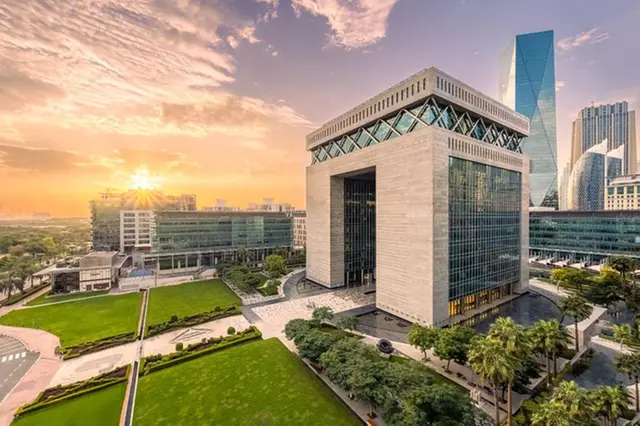2025 is emerging as a defining year for the Gulf’s capital-market landscape. Dubai International Financial Centre (DIFC) has posted record registrations and a surge in hedge-fund and asset-management activity, signalling Dubai’s intent to be the region’s fund gateway. Saudi Arabia’s Capital Market Authority has launched landmark reforms to further open Tadawul to foreign investors, aiming to deepen liquidity and attract global benchmarks. Qatar has accelerated green-bond listings and is expanding its ETF and derivatives offerings, while Bahrain and Kuwait continue to strengthen fintech regulations to lure cross-border capital. Collectively, these moves show a coordinated shift to rewire how capital is raised, traded and deployed across the GCC.
Dubai’s Fund Magnet: Measuring DIFC’s Investment Leap
Dubai International Financial Centre recorded its best-ever first half in 2025, onboarding 1,081 new active companies — a 32% year-on-year increase — bringing the total to roughly 7,700 active firms and nearly 48,000 professionals working within the centre. That growth is driven by asset managers, family offices and a fast-expanding hedge-fund cluster: DIFC now hosts some 85 hedge funds, a roughly 72% jump from a year earlier, while wealth and asset management firms climbed to around 440. These raw numbers matter: they show the UAE’s success at converting policy (tax neutrality, fund-friendly rules, new “Funds Centre” infrastructure) into real balance-sheet and personnel relocations. For fund managers the advantages are concrete — distribution access to regional institutional capital and proximity to large sovereign and family-office pools.
Tadawul reforms: what Riyadh is proposing and why it matters
In September–October 2025, Saudi Arabia’s Capital Market Authority unveiled a landmark consultation to open the Tadawul Main Market to all non-resident foreign investors. The draft proposes scrapping the Qualified Foreign Investor framework and ending swap-based access, enabling direct foreign ownership of Saudi-listed equities for the first time. The move is aimed at boosting liquidity, deepening the investor base and drawing larger allocations from global index funds. Analysts at UBS and MSCI estimate that the changes could attract $9–10 billion in passive inflows once fully implemented. Markets responded immediately: the Tadawul All Share Index (TASI) surged more than 5% in late September, its sharpest single-day rally since 2020.
These reforms align with the domestic capital engine of the Public Investment Fund (PIF), which has been anchoring new Gulf-focused funds and, in September, led a $55 billion acquisition of Electronic Arts (EA) — the largest all-cash take-private deal to date. Together, freer market access and PIF’s high-profile global deals signal a deepening integration of Saudi capital markets into global financial flows.
Cross-border flows & the GCC growth backdrop
Gulf sovereign wealth funds (SWFs) are central to the GCC’s evolving capital markets. In 2025, these funds collectively deployed $56.3 billion globally, maintaining a 40% share of worldwide SWF activity despite lower oil prices . Saudi Arabia’s Public Investment Fund (PIF) led with a $55 billion acquisition of Electronic Arts, while Abu Dhabi Investment Authority (ADIA) and Qatar Investment Authority (QIA) invested $9.6 billion and $7.6 billion, respectively.
Regionally, Bahrain’s Mumtalakat reported a record net profit of $963 million in 2024, reversing a loss from the previous year. Kuwait Investment Authority (KIA), managing nearly $1 trillion in assets, continues to prioritize U.S. investments, with its managing director emphasizing the importance of maintaining exposure to U.S. assets .
These developments underscore a strategic shift towards deeper local liquidity, clearer regulatory pathways, and enhanced investor confidence across the GCC, positioning the region as a dynamic hub for both public and private capital.
From Policy to Platform: The GCC’s Rise in Digital and Tokenized Assets
Complementing on-the-ground fund activity, the GCC is building a robust regulatory and infrastructure ecosystem for digital finance. Abu Dhabi’s ADGM has advanced a consultation on fiat-referenced tokens, closing 7 October 2025, signalling a clear regulatory approach for tokenised cash-like instruments. Dubai’s DIFC continues to enhance its Funds Centre and service-provider infrastructure, while the DFSA has launched its inaugural tokenisation sandbox, attracting nearly 100 firms. Qatar Financial Centre introduced its Digital Assets Framework, providing a legal foundation for tokenisation and crypto activities, positioning Qatar as a competitive fintech hub. These developments reduce friction for tokenised products, cross-border payments, and digital custody solutions. They also enable innovation across tokenized sukuk, retail and HNW distribution platforms, and digital assets. For fintech founders, the message is clear: regulators in the GCC are laying rules to foster innovation rather than block it.
Risks & What Could Slow the Momentum
Momentum in GCC capital markets is strong, but several headwinds could temper growth. Geopolitical tensions, particularly in the wider MENA region, and policy execution risks — such as delayed implementation of Tadawul foreign-ownership reforms — may slow foreign inflows. Global macro factors, including rising US interest rates and softer risk appetite, could compress new issuance; the IMF projects GCC real GDP growth at 3.2% in 2025, slightly lower than prior forecasts. Regulatory divergence across GCC jurisdictions may complicate cross-listing, fund distribution, and harmonisation. Prudent investors will monitor implementation timelines closely and maintain disciplined allocation strategies.
Looking Ahead: GCC Capital Markets on the Move
Investors should watch three near-term indicators: DIFC’s Funds Centre rollouts and subsequent AUM growth, Saudi Arabia’s Tadawul foreign-ownership consultation outcome, and ADGM’s finalisation of fiat-token regulations. Together, they will indicate whether 2025 represents a temporary market repositioning or the beginning of a sustained, multi-year integration of GCC capital markets, fostering greater liquidity, smoother cross-border fund flows, and long-term engagement from global investors

